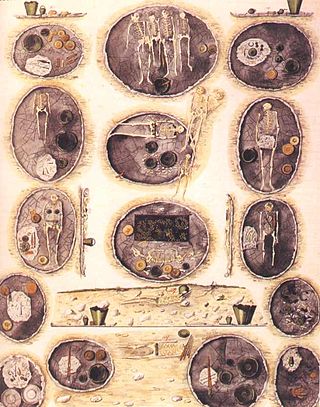De Hallstattkultuer is in prehistoaryske kultuer út de iere izertiid (1e helte 1e millennium f.Kr.), neamd nei it plak Hallstatt yn it Eastenrykske Salzkammergut, dêr't yn 1846 in grut grêffjild fûn waard mei in protte grêfjeften. Letter waarden ek op in soad oare plakken, fan Roemeenje oant Ingelân en yn Súd-Jeropa, oerbliuwsels fan dizze kultuer opgroeven. Karakterisearjend foar de kultuer is it brûzen skûtelwurk, meastentiids fersierd mei relyf of losse skulptueren.


- Pare, C.F.E. 1992: Wagons and Wagon-Graves of the Early Iron Age in Central Europe. Oxford (Oxford University Committee for Archaeology)
- Piggott, Stuart. 1983: The Earliest Wheeled Transport: From the Atlantic Coast to the Caspian Sea. Ithaca (Cornell University Press)
- Fagan Brian M. 2004: People of the earth: an introduction to world prehistory, Longman,
- www.hallstattzeit.de (dú)
- Legia - foarum foar izertiidstúdzje: De vroeg-ijzertijd of Hallstatt periode (± 800 - 450 v.o.j.) (ned)
- Otto H. Urban: Hallstatt: immer größer, immer älter (dú)
- Masumi Ninomiya: Wagons in Hallstatt Period: Its Technology and Use (in)
| Ofbylden dy't by dit ûnderwerp hearre, binne te finen yn de kategory Hallstatt culture fan Wikimedia Commons. |
Wikiwand in your browser!
Seamless Wikipedia browsing. On steroids.
Every time you click a link to Wikipedia, Wiktionary or Wikiquote in your browser's search results, it will show the modern Wikiwand interface.
Wikiwand extension is a five stars, simple, with minimum permission required to keep your browsing private, safe and transparent.

